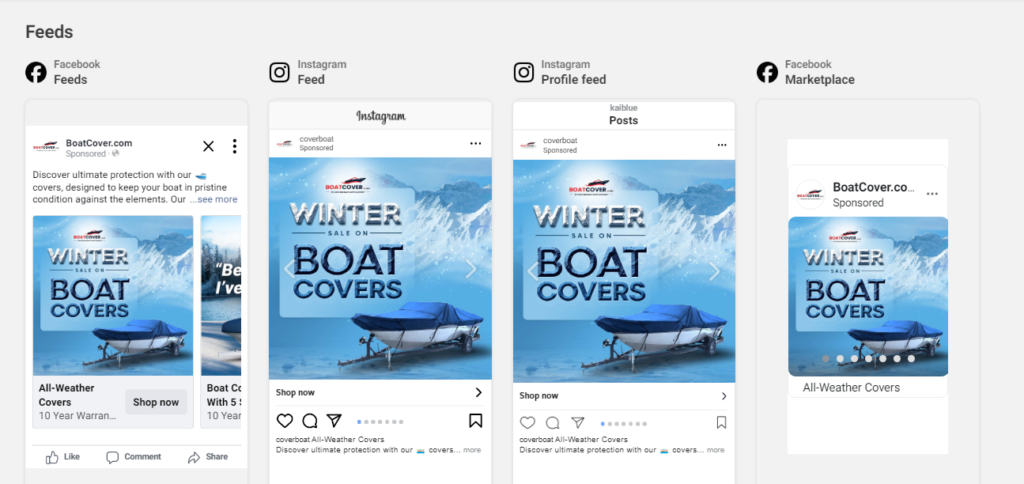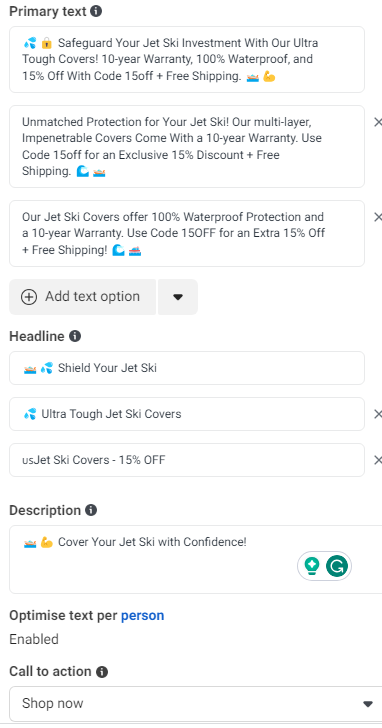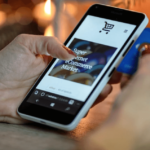Social media advertising has risen to prominence as a formidable tool for ecommerce businesses. Advertising allows brands to broaden their reach, increase sales, and establish brand awareness. Platforms like Facebook, Instagram, Twitter, and LinkedIn, have millions have active users each day. Leveraging social media for advertising has the potential to revolutionize the success of ecommerce endeavors.
Tips and Best Practices for Leveraging Social Media in Ecommerce
Here are some tips and best practices to help ecommerce businesses make the most of their social media advertising efforts.
1. Know Your Audience
Understand the demographics, interests, and behaviors of your target audience. Create detailed buyer personas that represent your ideal customers. By gaining insights into your audience’s preferences, challenges, and habits, you can tailor your social media ads to resonate with them effectively.
Knowing your audience enables you to:
- Target the Right Users: Use the targeting features offered by social media platforms to ensure your ads are reaching the individuals most likely to be interested in your products.
- Tailor Content Appropriately: Craft ad content that speaks directly to the interests and needs of your audience. This personalization enhances engagement and increases the likelihood of conversions.
- Refine Messaging: Understanding your audience allows you to use language and messaging styles that resonate with them. Whether it’s humor, inspiration, or a focus on practical benefits, aligning your messaging with your audience’s preferences enhances the effectiveness of your ads.
2. Choose the Right Platforms
Not all social media platforms are the same. Each caters to a unique user demographic and offers different features. Different social media platforms attract distinct user demographics. For example, Instagram and Pinterest are known for their visual appeal and may be more suitable for businesses with visually appealing products. LinkedIn, on the other hand, may be preferable for B2B ecommerce ads. For example, brands selling large quantities of supplies or specialty equipment targeting specific professionals.
Each platform has its preferred content formats and styles. Instagram thrives on visually striking images and short videos, while Twitter relies on concise and engaging text. Choosing platforms that complement your content style ensures your ads seamlessly integrate with users’ feeds. Social media platforms offer various ad formats, such as carousel ads, sponsored posts, and stories. Understanding the strengths and limitations of each platform’s ad formats helps you tailor your content for maximum impact.
Concentrating your efforts on platforms that yield the best results for your specific business can help optimize your advertising budget. This ensures you allocate resources where they are most likely to generate a positive return on investment.

3. Create Compelling Visuals
In the fast-scrolling environment of social media, attention spans are limited. Compelling visuals are more likely to catch the eye of users as they scroll through their feeds. This means an increased chance of engagement and ads that convert.
High-quality images and videos allow you to showcase your products in the best possible light. Clear and enticing visuals provide potential customers with a more immersive and detailed view of what you’re offering, potentially influencing their purchasing decisions. Consistent and visually appealing branding across your social media ads helps to build brand recognition. Establishing a visual identity through logos, color schemes, and design elements makes your brand more memorable to users. Color and lighting in brand photography can have an impact, too.
Compelling visuals have the power to evoke emotions and create a connection with your audience. Whether it’s joy, excitement, or a sense of aspiration, the right visuals can resonate with viewers on a deeper level. Visuals are a powerful medium for conveying your brand message. Whether you’re highlighting product features, promoting a sale, or telling a brand story, visuals can communicate messages more effectively than text alone.
4. Craft Engaging Ad Copy

Just like compelling visuals, engaging ad copy is essential for capturing the attention of social media users. The copy should be concise, impactful, and immediately draw the viewer in, prompting them to read further. Communicate the value of your products or services in your ad copy. Highlight key features, benefits, and unique selling points to persuade potential customers that your offering meets their needs.
Encourage immediate action by incorporating elements of urgency or scarcity in your ad copy. Limited-time offers, exclusive deals, or promotional events can motivate users to take prompt action, driving conversions. Choose words that evoke emotion and resonate with your target audience. Persuasive language can create a connection, making users more receptive to your message and more likely to engage with your brand.
Instead of solely focusing on features, emphasize the benefits of your products. Help users envision how your offerings can enhance their lives or solve specific problems, making the value proposition more tangible. Clearly state what action you want users to take. Whether it’s making a purchase, signing up for a newsletter, or visiting your website, include a compelling and actionable CTA that guides users on the next steps.
5. Leverage User-Generated Content
User-generated content refers to the practice of incorporating content created by your customers into your advertising strategy. This can include photos, reviews, testimonials, and other content generated by users who have had positive experiences with your products or brand. Here’s why leveraging user-generated content (UGC) is a valuable best practice:
- Authenticity and Credibility: User-generated content is often perceived as more authentic and trustworthy than branded content. Customers tend to trust the opinions and experiences of their peers, making UGC a powerful tool for building credibility and authenticity around your brand.
- Community Building: Encouraging customers to share their experiences creates a sense of community around your brand. When users see others enjoying and endorsing your products, it fosters a connection and encourages them to become part of the community by sharing their own experiences.
- Diverse Perspectives: UGC provides diverse perspectives and showcases your products in real-life situations. This variety can appeal to a broader audience, allowing potential customers to see how your products fit into different lifestyles and settings.
- Engagement and Interactivity: Inviting users to contribute content fosters engagement and interactivity. Encourage customers to share photos, videos, or stories related to your products through branded hashtags or contests. This will not only create a two-way conversation but it will also provide a constant stream of fresh content.
- Cost-Effective Content Creation: User-generated content can serve as a cost-effective source of high-quality visuals. Instead of solely relying on professionally produced images, you can use the content created by your customers to showcase your products in real-world scenarios.
- Social Proof: UGC serves as powerful social proof. When potential customers see that others have had positive experiences with your brand, it can influence their decision-making process, instilling confidence in the quality and appeal of your products.
Creating a dedicated space or hashtag for user contributions can help streamline the process and make it easy for customers to participate. Overall, incorporating UGC into your social media advertising strategy can enhance trust, engagement, and the overall impact of your ecommerce marketing efforts.
6. Optimize for Mobile
A significant portion of social media users access platforms through mobile devices. Optimizing for mobile ensures that your ads reach and engage a broad audience, catering to the preferences of users who predominantly use smartphones for their online activities. Create ads with a responsive design that adapts to different screen sizes and resolutions. This ensures that your visuals and text are displayed appropriately and that users can easily navigate and interact with your content on devices of varying dimensions.
Mobile users value speed and efficiency. Optimize your ad content to load quickly on mobile devices, reducing the risk of users abandoning your content due to slow loading times. This is crucial for maintaining user interest and preventing bounce rates. Mobile screens have limited space, so it’s important to keep your messaging clear and concise. Use succinct headlines and impactful visuals to convey your message effectively within the smaller screen dimensions.
Choose ad formats that are well-suited for mobile viewing. For instance, formats like carousel ads, Instagram Stories, and interactive elements can enhance the mobile user experience, providing an engaging and immersive encounter. Leverage mobile-specific targeting options provided by social media platforms. Customize your campaigns to target users according to their mobile activities, including app usage, location, or the type of device they use.
7. Harness the Power of Retargeting for Enhanced Ecommerce Success
Many users may visit your website, browse products, or add items to their cart but leave without completing a purchase. Retargeting allows you to re-engage these users by displaying relevant ads, reminding them of their interest, and encouraging them to return and make a purchase. Retargeting enables you to create personalized advertisements based on users’ past interactions with your site. Whether they viewed specific products or initiated the checkout process, you can tailor your ads to showcase the exact items or categories that caught their interest.
Dynamic retargeting goes beyond standard personalization by dynamically generating ads tailored to the specific products users saw or observed on your website. This highly personalized approach enhances relevance and captures users’ attention with items they have already shown interest in. Retargeting campaigns can be designed to maintain consistency across devices. Whether users initially visit your site on a desktop or mobile device, retargeting ads can reach them on various platforms, ensuring a cohesive brand experience.
Categorize your audience according to their activities and engagement on your website. Create specific retargeting campaigns for different segments, such as those who abandoned a cart, visited specific product pages, or spent a certain amount of time browsing. This allows for more targeted and effective advertising. Tailor your retargeting ad messaging based on the user’s position in the sales funnel. For example, individuals who left items in their shopping cart may positively react to a reminder about their selected products, whereas those who browsed without making a purchase could find value in a time-limited discount offer.
8. Stay Informed About Platform Updates
Social media platforms regularly update their algorithms to enhance user experience and engagement. By staying informed, you can adapt your advertising strategy to align with these changes, ensuring that your content remains visible and effective.
Social media platforms frequently introduce new features and ad formats. Being aware of these updates allows you to explore and leverage these features to enhance the creativity and effectiveness of your ads, keeping your content fresh and engaging. Platforms often refine their targeting options to help advertisers reach specific audience segments. Staying informed about these updates enables you to optimize your targeting parameters, ensuring that your ads are directed toward the most relevant audience for your ecommerce business.
Social media platforms update their advertising policies to maintain a safe and positive user experience. Being aware of policy changes helps you ensure that your ads comply with platform guidelines. This means avoiding potential issues such as ad rejections or account suspensions. Understanding the nuances of platform updates allows you to fine-tune your advertising strategy. Staying informed empowers you to maximize the performance of your ads. For example, you can adjust bid strategies, incorporate new ad formats, or optimize delivery settings.
Social media trends evolve, and platforms may introduce features that align with emerging trends. Staying informed allows you to stay ahead of these trends, ensuring that your ecommerce brand remains relevant and resonant with your target audience.
Wrapping Up
Social media advertising offers ecommerce businesses a powerful tool to connect with their target audience, drive sales, and build a strong online presence. By embracing these strategies, ecommerce brands can maximize the impact of their social media advertising efforts and stay ahead in the competitive ecommerce landscape.
Author Bio: Andy Beohar is the Managing Partner at SevenAtoms, a leading B2B demand generation agency. SevenAtoms, a Google Premier Ads partner, drives growth for SaaS and B2B businesses through innovative and optimized paid search. Andy plays a strategic role in managing paid search campaigns.
